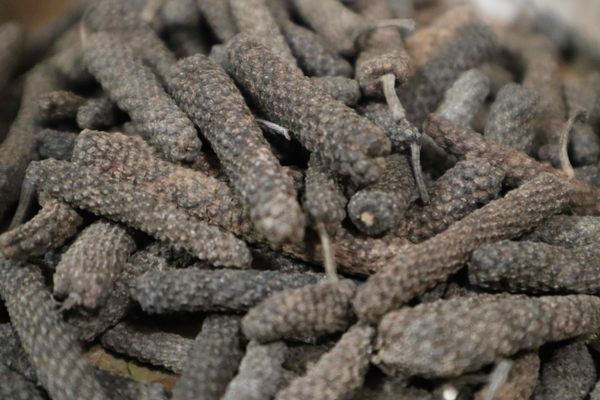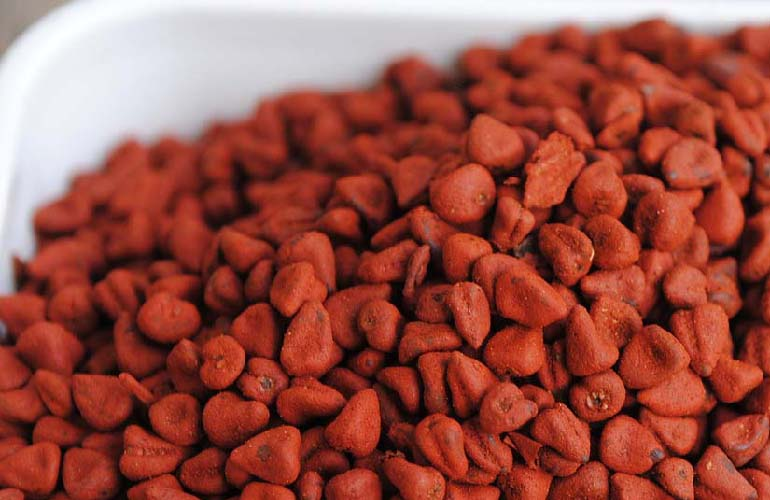Spices have been an integral part of human civilization for thousands of years. They have been used for culinary purposes, medicinal benefits, and even as a form of currency. The global spice trade has a rich history, with explorers and traders risking their lives to bring exotic flavors from distant lands to their homelands.
Today, the spice industry continues to thrive, with some spices commanding incredibly high prices due to their rarity, unique flavor profiles, and labor-intensive harvesting processes. In this article, we will explore the top 12 most expensive spices in the world, delving into their origins, uses, and what makes them so valuable.
Saffron

Saffron, often referred to as “red gold,” is the most expensive spice in the world. It is derived from the stigmas of the Crocus sativus flower, which is native to the Mediterranean region. Each flower produces only three stigmas, which must be carefully hand-picked and dried, making the harvesting process incredibly labor-intensive. It takes approximately 150,000 flowers to produce just one kilogram of saffron.
The high price of saffron is not only due to its labor-intensive harvesting process but also its unique flavor and medicinal properties. Saffron has a distinctive aroma and a slightly bitter, honey-like taste. It is used in various cuisines worldwide, particularly in rice dishes such as paella and risotto. Saffron is also known for its medicinal properties, with studies suggesting that it may have anti-inflammatory, antioxidant, and anti-depressant effects.
Vanilla

Vanilla is the second most expensive spice in the world, after saffron. It is derived from the pods of the vanilla orchid, which is native to Mexico and Central America. The vanilla plant is notoriously difficult to cultivate, requiring specific growing conditions and hand pollination. Once the pods are harvested, they undergo a lengthy curing process that can take several months.
Vanilla is prized for its sweet, fragrant aroma and flavor, which is used in a wide range of desserts, baked goods, and beverages. It is also used in perfumery and aromatherapy. The high demand for vanilla, combined with its labor-intensive cultivation and processing, has led to its high price. In recent years, vanilla prices have soared due to a global shortage caused by cyclones and other natural disasters in Madagascar, the world’s leading producer of vanilla.
Cardamom

Cardamom is a spice that is native to the forests of southern India and Sri Lanka. It is the third most expensive spice in the world, after saffron and vanilla. The spice is derived from the seeds of various plants in the ginger family, which are harvested by hand and then dried.
Cardamom has a complex flavor profile, with notes of citrus, mint, and smoke. It is used in both sweet and savory dishes, particularly in Indian, Middle Eastern, and Scandinavian cuisines. Cardamom is also known for its medicinal properties, with studies suggesting that it may have anti-inflammatory, antioxidant, and digestive benefits.
Cloves

Cloves are the dried flower buds of the Syzygium aromaticum tree, which is native to Indonesia. They are the fourth most expensive spice in the world, due to their labor-intensive harvesting process and high demand. Cloves have a strong, pungent aroma and a slightly bitter, yet sweet taste. They are used in a variety of cuisines worldwide, particularly in spice blends such as garam masala and Chinese five-spice powder.
Cloves are also known for their medicinal properties, with studies suggesting that they may have anti-inflammatory, antioxidant, and antimicrobial effects. In traditional medicine, cloves have been used to treat a range of ailments, including toothache, indigestion, and respiratory issues.
Cinnamon

Cinnamon is a spice that is derived from the inner bark of various tree species in the genus Cinnamomum. It is native to Sri Lanka, but is also cultivated in other countries such as Indonesia, China, and Vietnam. Cinnamon is the fifth most expensive spice in the world, due to its high demand and the labor-intensive process of harvesting and processing the bark.
Cinnamon has a warm, sweet aroma and flavor, with notes of wood and citrus. It is used in a wide range of sweet and savory dishes, particularly in baked goods, desserts, and spice blends such as pumpkin pie spice and chai tea. Cinnamon is also known for its medicinal properties, with studies suggesting that it may have anti-inflammatory, antioxidant, and blood sugar-lowering effects.
Black Cumin Seed

Black cumin seed, also known as Nigella sativa, is a spice that is native to Southwest Asia and has been used for culinary and medicinal purposes for thousands of years. It is the sixth most expensive spice in the world, due to its rarity and the labor-intensive process of harvesting the seeds.
Black cumin seed has a slightly bitter, nutty flavor and aroma, with notes of oregano and onion. It is used in various cuisines worldwide, particularly in Indian, Middle Eastern, and North African dishes. Black cumin seed is also known for its medicinal properties, with studies suggesting that it may have anti-inflammatory, antioxidant, and immune-boosting effects.
Turmeric

Turmeric is a spice that is derived from the rhizome of the Curcuma longa plant, which is native to Southeast Asia. It is the seventh most expensive spice in the world, due to its high demand and the labor-intensive process of harvesting and processing the rhizomes.
Turmeric has a warm, slightly bitter flavor and a bright yellow color, which is often used as a natural food coloring. It is a staple ingredient in many Indian and Southeast Asian dishes, particularly in curries and rice dishes. Turmeric is also known for its medicinal properties, with studies suggesting that it may have anti-inflammatory, antioxidant, and brain-boosting effects.
Mahlab

Mahlab is a spice that is derived from the seeds of the St. Lucie cherry tree, which is native to the Middle East and Mediterranean region. It is the eighth most expensive spice in the world, due to its rarity and the labor-intensive process of harvesting and processing the seeds.
Mahlab has a slightly bitter, almond-like flavor and aroma, with notes of cherry and rose. It is used in various Middle Eastern and Mediterranean dishes, particularly in baked goods such as breads and pastries. Mahlab is also known for its medicinal properties, with studies suggesting that it may have anti-inflammatory and antioxidant effects.
Grains of Paradise

Grains of paradise, also known as Aframomum melegueta, is a spice that is native to West Africa. It is the ninth most expensive spice in the world, due to its rarity and the difficulty of cultivating the plant.
Grains of paradise have a pungent, slightly spicy flavor and aroma, with notes of black pepper and cardamom. They are used in various West African dishes, particularly in spice blends and sauces. Grains of paradise are also known for their medicinal properties, with studies suggesting that they may have antimicrobial and digestive benefits.
Long Pepper

Long pepper, also known as Piper longum, is a spice that is native to India and Southeast Asia. It is the tenth most expensive spice in the world, due to its rarity and the labor-intensive process of harvesting and processing the fruit.
Long pepper has a pungent, slightly sweet flavor and aroma, with notes of black pepper and cinnamon. It is used in various Indian and Southeast Asian dishes, particularly in spice blends and curries. Long pepper is also known for its medicinal properties, with studies suggesting that it may have anti-inflammatory, antioxidant, and digestive benefits.
Kaffir Lime Leaves

Kaffir lime leaves are a spice that is derived from the Citrus hystrix tree, which is native to Southeast Asia. They are the eleventh most expensive spice in the world, due to their rarity and the difficulty of cultivating the tree.
Kaffir lime leaves have a distinctive, slightly bitter flavor and aroma, with notes of citrus and herbs. They are used in various Southeast Asian dishes, particularly in soups, curries, and stir-fries. Kaffir lime leaves are also known for their medicinal properties, with studies suggesting that they may have anti-inflammatory, antioxidant, and immune-boosting effects.
Annatto Seeds

Annatto seeds, also known as achiote seeds, are a spice that is native to tropical regions of the Americas. They are the twelfth most expensive spice in the world, due to their rarity and the labor-intensive process of harvesting and processing the seeds.
Annatto seeds have a slightly sweet, peppery flavor and a bright red color, which is often used as a natural food coloring. They are used in various Latin American and Caribbean dishes, particularly in spice blends and marinades. Annatto seeds are also known for their medicinal properties, with studies suggesting that they may have anti-inflammatory, antioxidant, and antimicrobial effects.
Conclusion
In conclusion, the spice trade has been an important part of human history for thousands of years, with spices playing a significant role in culinary, medicinal, and cultural traditions around the world. The top 12 most expensive spices in the world are a testament to the enduring value and importance of these flavorful and aromatic ingredients.
From the labor-intensive harvesting of saffron and vanilla to the rare and difficult-to-cultivate grains of paradise and kaffir lime leaves, these spices command high prices due to their unique flavor profiles, medicinal properties, and the skill and effort required to bring them to market.
As the global demand for spices continues to grow, it is important to consider the sustainability and ethical sourcing of these valuable ingredients. Many of the most expensive spices are grown in developing countries, where farmers and workers may face challenges such as low wages, poor working conditions, and environmental degradation.
By supporting sustainable and fair trade practices in the spice industry, we can help ensure that these precious ingredients are available for generations to come, while also supporting the livelihoods and well-being of the communities that produce them.
Ultimately, the top 12 most expensive spices in the world are a reflection of the rich cultural heritage and diversity of our planet, as well as the enduring human desire for flavor, aroma, and medicinal benefits. Whether used in culinary creations, traditional remedies, or simply enjoyed for their unique sensory qualities, these spices will continue to be treasured and valued for years to come.

